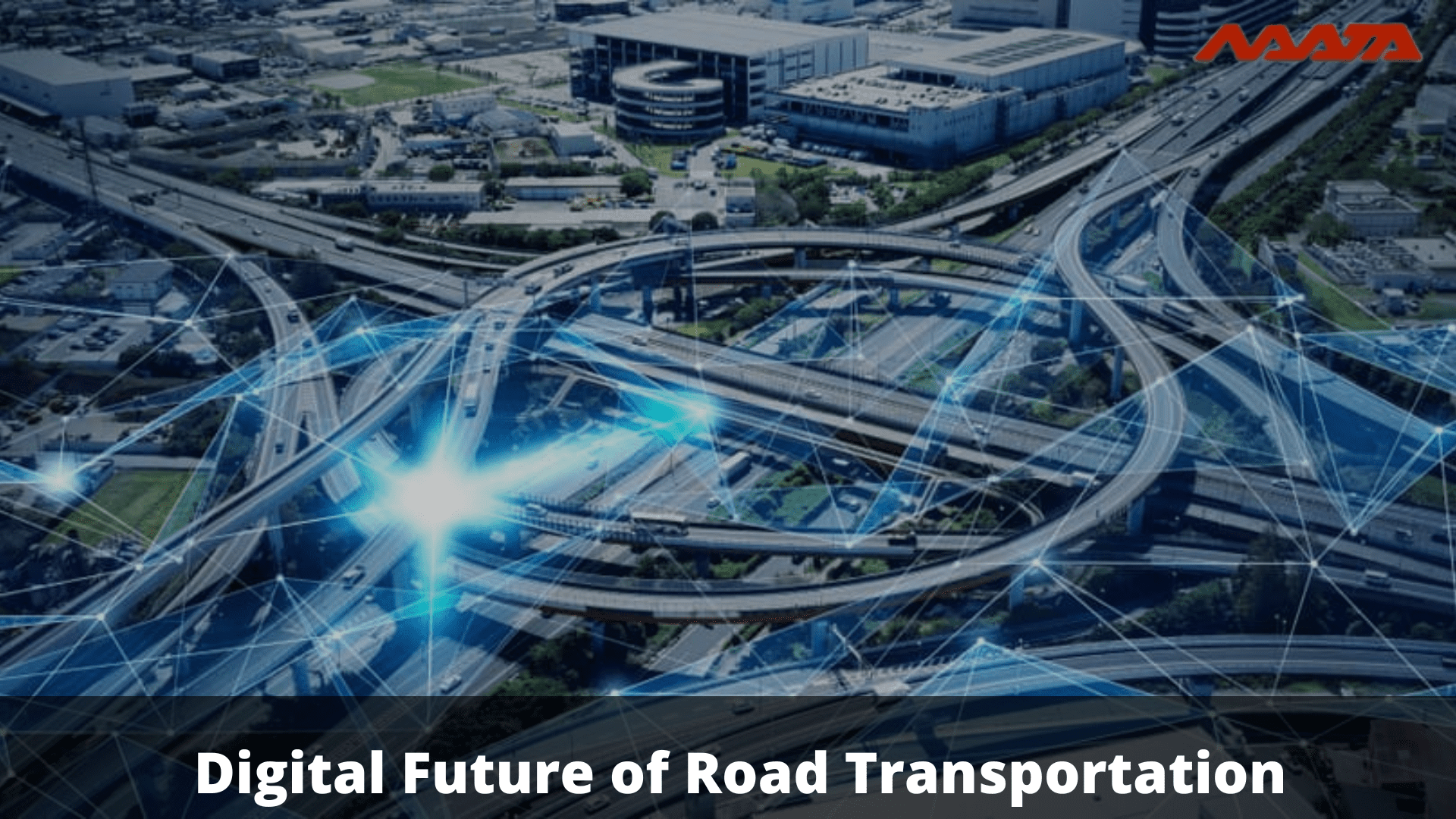Digital Future of Road Transportation
Table of Contents
Digital Future of Road Transportation
The transportation sector is confronted with significant structural issues that need significant adjustment. Low asset utilization, the difficulties of growing, and digital disruptions are generating new circumstances for firms to contend with. New digital road transporters are inherently stronger at coping with technology and analytics, but older freight forwarders still have the potential to survive and develop in the market.
Consumer-focused businesses like retail, entertainment, and travel have been transformed by digital start-ups, and now commercially oriented industries are following suit. Road freight transport, which is still extremely fragmented and controlled by manual procedures, is considered by digital competitors as ripe for transformation.
At the same time, new companies in digital freight transport benefit from a tremendous surge in financing. Between January 2012 and September 2017, venture capital firms invested more than $3,3 billion in digital shipping and logistics start-ups. A major part of these subsidies goes to newly founded road freight transport businesses.
For the established enterprises, road freight transport was a competitive business with limited profit margins. Digital start-ups might make life even tougher by bringing new business models and handling the continual inefficiencies. Companies must act immediately to exploit digital possibilities or risk diminishing margins and dwindling volumes.
You May Also Like To Read: Digital Logistics Meaning, Framework and Impact

The New Landscape of Digital Future of Road Transportation
The majority of digital start-ups in the road freight transport industry provide five distinct sorts of solutions and aim to alleviate certain problems:
Fleet Management Systems
Freight forwarders may increase the effectiveness of their fleet by evaluating operational data with the assistance of a fleet management system (FMS); road haulage firms often gather fleet and driving data with the assistance of telematics devices that are installed on board vehicles. Fleet Management System products and services include solutions for driver management that monitor driving performance, ensure safety, and avoid unnecessary costs; solutions for operations management that concentrate on route optimization and mobile workforce management; and network solutions that assist the integration of enterprise resources planning software.
Transport Management Systems
The use of a Transport Management System makes it possible to digitally integrate all of the players and activities in the logistics process that are linked to transportation. A system like this one makes use of the data that is produced by a Fleet Management Systems in order to allow several tasks. These functions include the dispatching of loads onto trucks, the management of intermodal transportation, the tracking of shipments, and the achievement of KPIs.
A TMS may also serve as an onboard digital operating system, which allows it to run a variety of applications inside the vehicle itself, including telematics.
There are two distinct varieties of TMS. The first category is comprised of systems that are either networked or hosted in the cloud and provide software-as-a-service options for many users. The second kind is a solution that is implemented onsite at a particular organization.
Marketplaces
These platforms contribute to the improvement of market transparency and efficiency by bringing shippers and freight forwarders together and by matching the availability of road transport capacity to the demand in the market. The many marketplaces may be broken down into two primary categories:
Shippers to carriers in the industry: These online marketplaces assist shippers in locating available freight capacity for entire or partial loads, while simultaneously assisting freight forwarders and carriers in increasing capacity utilization.
Freight forwarder to freight forwarder: Carriers and freight forwarders are able to trade truck capacity and loads via the use of these marketplaces. This includes shipments that need less than full truckloads.
Digital forwarders
Freight forwarders often enter into contracts with carriers and serve as a single point of contact for shippers for all transport-related services, including contracting and payments. Digital freight forwarders are becoming more popular. Therefore, these new companies pose a threat to the established carriers in the market. Although this is more frequent in the air and ocean freight industries than it is in the road freight sector because air and ocean freight delivery routes are more standardized, digital freight forwarders nonetheless guarantee delivery performance and have the ability to acquire capacity.
Tendering platforms
Shippers and carriers are able to directly negotiate longer-term transport contracts with the assistance of these platforms. These kinds of platforms also provide cutting-edge methods to optimize the networks of partners, which helps to minimize the network imbalances that might occur between forwarders.
Also Read: 11 Importance of Data Science In Logistics

Challeges For Road Transportation
Digital disruption is the most current problem facing the sector. Digital freight forwarders like senders might upset the sector by slashing prices and changing commerce away from yearly shipper–forwarder–carrier contracts toward a significantly greater percentage of spot business. The rising number of digital businesses providing an ever-expanding range of services represents one manifestation of digital disruption in the freight sector. Trucking businesses may also benefit from the rising importance of digital players by supplementing their networks with extra loads and capacity from digital players. Now, more than ever, the most pressing strategic challenge is: Can trucking businesses learn to manage drivers in a digital world quicker than IT giants?
A trucking company’s capacity to take advantage of other digital participants in the industry is evaluated in four levels of excellence:
Make extra orders more easily accessible by expanding coverage. The primary enablers in this scenario are the deployment of new load boards and digital resellers, as well as the direct connectivity with shippers through API.
Improve order conversion rates by making operations more professional. Bidding may be made more efficient and more uniform by standardizing the criteria and speeding up the process. Expanding the amount of IT integration and synchronizing the timing with regular sales procedures are necessary.
Improve order selection and pricing via the use of sophisticated analytics. Use an analytics-based planning engine to help with load selection and make sure the network is suitable for it. As a result, price suggestions may be provided based on the network’s actual and real-time effect.
Automate the bidding process for maximum efficiency. Orders are entered into the transportation management system using a fully automated pricing and bidding procedure that is fully integrated.
Many businesses are still in the early stages of this shift.
Also Read: 10 Major Benefits of Internet of Things (IoT) on Supply Chain Management

Taking Advantage of the Digital Possibility
Despite a challenging market, incumbents have the upper hand because of their assets, industry knowledge, customer and supplier ties, and networks. If incumbents fail to digitize their products, however, the business models of digital start-ups, together with their price and capacity transparency, will put pressure on incumbents’ profits. Some of the present industry participants may lose market share to digital rivals that are cheaper and more agile. Traditional carriers, for example, may lose business to virtual carriers.
The incumbents have a competitive advantage due to their assets, knowledge, and networks.
By proactively reacting to the start-up threat, incumbents have the potential to replace their manual operations with more efficient digital processes, introduce digital business models, and discover novel methods to acquire market share and escape the industry’s low-margin trap. In an otherwise economically focused business, digitization may assist current companies to distinguish themselves from the competitors, gaining new consumers, and keeping existing ones. Established firms distinguish themselves by doing the following actions:
The digitization and automation of operations
Some participants automate essential internal operations and modernize their user interfaces with digital front-ends in order to minimize transaction costs and enhance the customer experience.
Collaboration with new ventures
While sustaining their core business, some organizations collaborate with new entrants to gain insight into and profit from next-generation technological breakthroughs and business models.
Thanks For Reading: Digital Future of Road Transportation
Powered By 360Presence
Digital Future of Road Transportation Digital Future of Road Transportation Digital Future of Road Transportation




